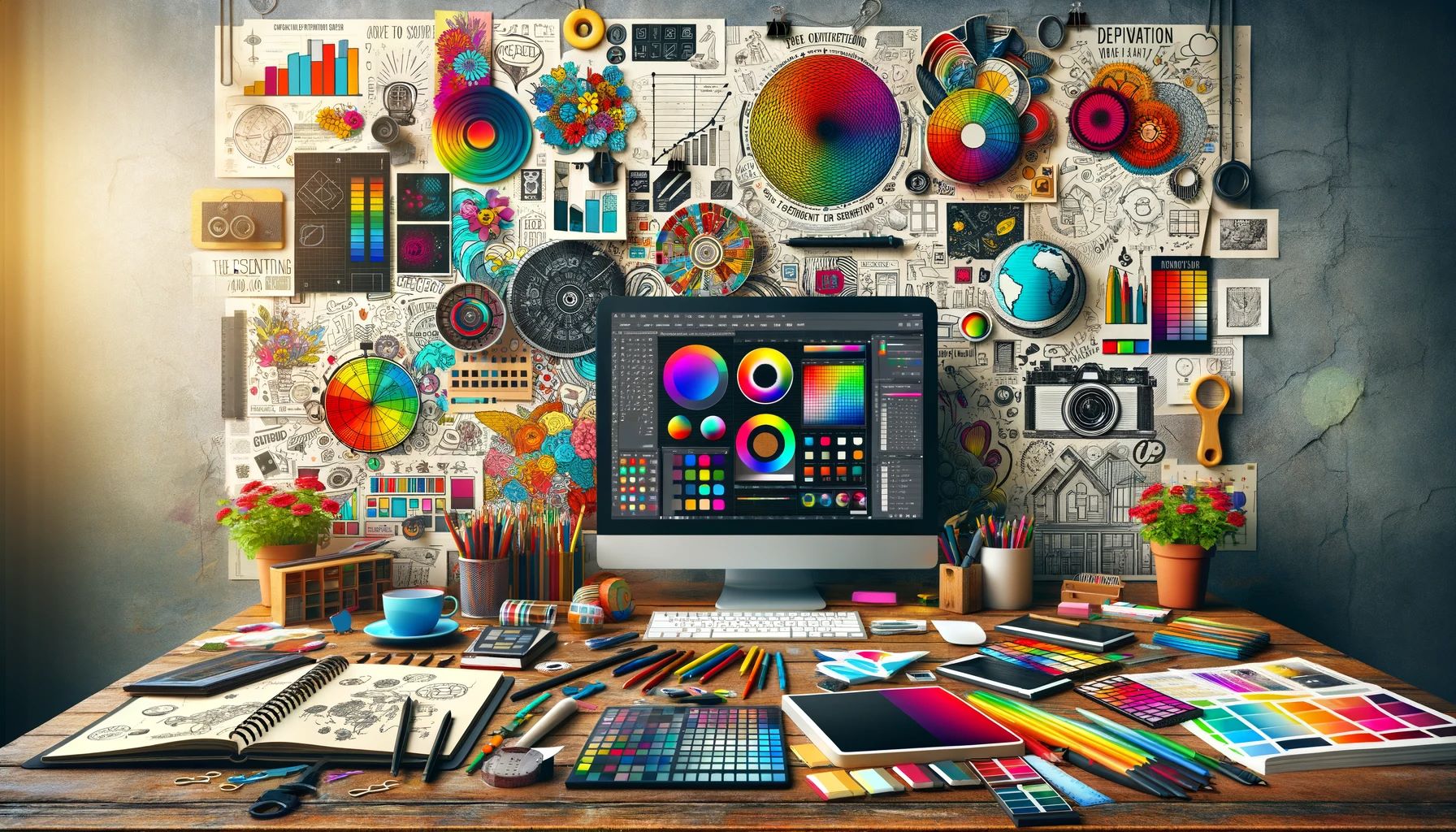Physical Address
304 North Cardinal St.
Dorchester Center, MA 02124
Physical Address
304 North Cardinal St.
Dorchester Center, MA 02124

Graphic design is a multifaceted discipline that intertwines creativity, technology, and communication. It’s an art form that uses visual and textual content to convey messages, stimulate emotions, or promote ideas. This article will delve into the essentials of graphic design, offering an in-depth understanding of its core principles, critical elements, and practical applications.
At the heart of every successful graphic design project are four fundamental principles: Contrast, Repetition, Alignment, and Proximity (CRAP). These principles guide designers in their creative process and provide a framework for creating visually appealing designs.
Contrast is a powerful tool in graphic design used to create emphasis and organise information. It involves differentiating elements such as colour, size, typeface or space to make certain parts stand out.
Repetition strengthens a design by tying together individual elements. It can be achieved through consistent use of colours, shapes or patterns which creates visual interest and reinforces branding.
This principle refers to the arrangement of elements in relation to each other. Proper alignment creates a clean look that enhances readability and coherence.
Proximity involves grouping related items together to create organisation within a design. It helps users understand the relationship between different elements.
Beyond these core principles are essential elements that form the building blocks of any graphic design piece. These include line, shape, colour, texture and typography.
In graphic design terms, lines are used to divide space, direct the viewer’s eye, or highlight specific information. They can be bold and thick, thin and subtle, or anything in between.
Shapes are defined by boundaries such as lines or colour, and they convey specific meanings. For example, circles often represent unity or completeness, while squares suggest stability.
Colour is a powerful tool that can evoke emotions and dictate mood. Understanding colour theory is crucial for designers to communicate effectively with their audience.
Texture adds depth to a design. Whether it’s physical (like paper) or visual (like an image), texture can enhance the overall user experience by engaging the sense of touch.
This refers to the art of arranging type to make text legible and visually appealing. Good typography enhances readability and draws attention where it’s needed.
In today’s digital age, graphic design permeates every aspect of our lives. It’s present in branding – creating logos, business cards, websites; advertising – designing posters, banners; editorial design – crafting book covers, magazines; packaging – shaping product boxes; signage – making road signs; and even in social media posts.
A well-executed graphic design not only attracts attention but also communicates effectively with its intended audience. It has the power to influence decisions, shape perceptions and drive engagement.
To sum up: The essentials of graphic design revolve around understanding its core principles and elements while applying them practically in various fields. Aspiring designers should familiarise themselves with these fundamentals before diving into this creative world filled with endless possibilities.